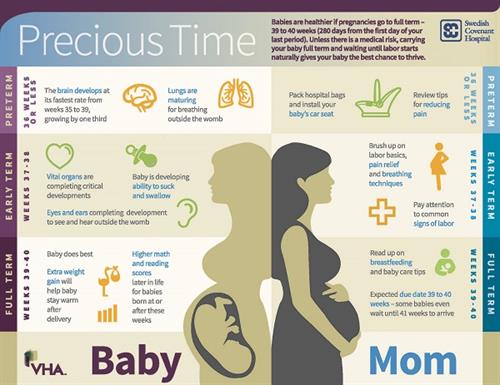Are elective deliveries safe?
Expecting parents receive countless pieces of advice. But when it comes to the overall health of mother and baby, one of the most important things they can do is practice patience. Relatively simple and costing nothing, reaching full term (39 to 40 weeks gestation) can have a major impact on the child’s health and development.
In the last decade, more and more women have requested an early elective delivery (EED) – an induction or scheduled C-section before they are full term, without medical rationale. EEDs are chosen for a variety of reasons, such as schedule preferences for working families and moms, travel plans of visiting relatives, to ensure a specific physician delivers the baby, or relief from common aches and pains.

Although tempting to plan around the exact date a baby will arrive, EEDs put moms and babies at risk for complications – from longer hospital stays for the mother, to developmental, respiratory and feeding problems for the infant. Research shows that many people don’t know the definition of full term, and therefore may be unaware of the risks surrounding EEDs. A 2009 study of 650 women who recently gave birth found that 50-percent believed full term is reached before 37 weeks gestation, and nearly all, 92-percent, believed full term is reached before 39 weeks.
In the final weeks of pregnancy babies do a lot more than gain weight.
- Weeks 35 – 39: Babies’ brains grow approximately one-third in size
- Pre- 39 weeks: A baby’s lungs and liver are still completing development
- 39 weeks and beyond: Babies born full term have higher math and reading scores later in life
Swedish Hospital wants to remind expecting parents that one of the best things pregnant women can do for their own health and the health of their child is to wait until labor occurs naturally at full term.
By Nicole Joseph | Published August 13, 2014

